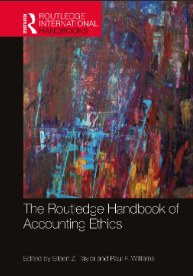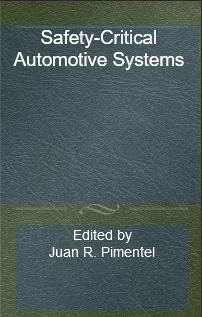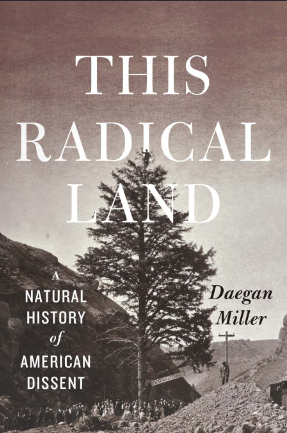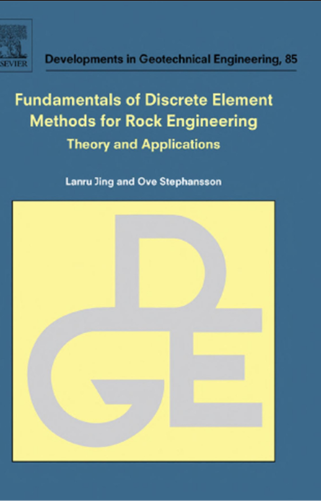موضوعات
آموزش و پرورش
ادبیات و زبان
پزشکی، دندانپزشکی و داروسازی
تاریخ و جغرافیا
داستان و رمان
دیگر
دین و فلسفه
روانشناسی
ریاضیات و آمار
سلامتی، تناسب اندام و رژیم غذایی
شیمی و پلیمر
علوم اجتماعی و حقوق
علوم زیستی و بیوتکنولوژی
فیزیک و نجوم
کامپیوتر و اینترنت
کتابهای کودکان و داستان
کسب و کار و اقتصاد
کشاورزی و دامپزشکی و غذا
معماری
مهندسی و فناوری
هنر و تئاتر
محصولات
HE ROUTLEDGE HANDBOOK OF ACCOUNTING ETHICS - Original PDF
نویسندگان: خلاصه: 1 INTRODUCTION Eileen Z. Taylor and Paul F. Williams “Ethics” and “morals” are two terms about which there is ambiguity. Some scholars consider the terms to be synonymous. Others make a distinction that ethics pertains to right conduct vis-à-vis others, while morals pertains to one’s personal sense of right conduct; still others reverse that distinction. Philosophers tend to regard the distinction between “ethics” and “morals” to be that ethics pertains to a centuries-old conversation about how we decide what is good and bad, right and wrong, while morals is the content of good and bad, right and wrong. The perspective on “ethics” taken in this book is this latter sense; thus the title Companion to Accounting Ethics. The book’s purpose is not to be a handbook of accounting rights and wrongs but rather a collec- tion of conversations employed by educators to assist students of accounting to become more attuned to accounting’s ethical aspects and to become more critical thinkers about the ethical complexities of the function of accounting in human society. As a social science, accounting is the creation of people, for the purpose of accounting for transactions (generally monetary) between and among groups of people. Accounting does not exist without people, and its rules of the day are determined by people; it is mutable and wholly dependent on both the decisions made by people with economic power and acceptance of those decisions by those same people. Similarly, ethics are enacted by people, and the ethicality of an action is determined by the individual affected by the action, as well as by the collective societal acceptance or rejection of an action. Accounting, because it is people driven, inherently has an ethical component. Every deci- sion about how to account for a transaction at some point affects an individual, either directly or indirectly. For example, decisions about recording revenue affect those whose income is commission-based. Decisions about recording an expense affects taxes paid (and received by the government for the benefit of society). Our primary goal with this book is to call attention to the intersectionality of accounting and ethics and to encourage students and researchers to consider the ethical implications of accounting decisionsSafety-Critical Automotive Systems - PDF
نویسندگان: خلاصه: Preface The subject of safety-critical automotive systems is growing in importance, as one can see by perusing the latest publications of SAE International. Safety has become an integral and essential part behind the engineering process for the modern vehicle. Vehicle safety is a wide-ranging discipline covering many engineering activities spanning materials, ergonomics, environmental, functional, and so forth. This book covers functional safety, also referred to as system safety. Functional (or system) safety refers to aspects of the overall safety of a vehicle that rely on the vehicle sub-systems producing correct outputs or operating correctly in response to stimuli. The most important vehicle sub-systems are the following: 1. Sensors 2. Actuators 3. Electronic control units (ECUs) 4. Communication systems 5. Software (e.g., application, middleware, drivers) Thus, it is timely that a book covering the most important aspects of functional (i.e., system) safety-critical automotive systems is published. The goals of this book are threefold: 1. To provide a quick introduction to and summary of the subject 2. To provide a classification and analysis of the recent literature on the subject 3. To reproduce the most representative of SAE publications on the subject The task of assembling a book on safety-critical automotive systems is challenging because the subject is complex, involving several technical areas that have contributed to the existing body of knowledge. In addition, the subject is by no means mature. There will be many excellent contributions and publications in the years to come. There are also many good publications in a number of worldwide conferences and/or journals. However, the intent of this book was to consider only SAE publications. Nevertheless, many of the SAE papers in this book include references to other publications. After selecting a number of papers, the question arose as to what criteria should be used to classify these papers. One possible criterion was to organize the papers around the constituent elements of a system (e.g., sensors, actuators, ECUs, communication system, software). Another criterion was to organize the papers along the steps to be followed while building a complete final system. We have decided to use the second criterion. Accordingly, the papers are organized in the following sections: 1. Introduction to safety-critical automotive systems 2. Safety processes to be followed 3. Requirements to be met 4. Analysis and design methods and techniques 5. Prototyping and target implementation 6. Testing, verification, and validation methLive Sports Media The What, How and Why of Sports Broadcasting Second Edition - Original PDF
نویسندگان: خلاصه: xv Preface Athletic competitions have affected how people perceive life and their roles within social groups since the ancient Olympic Games began in Greece in 776 BC, and most certainly back even farther before recorded history. On the North American continent for more than 1,000 years, the game of lacrosse has affected the social rela- tions among groups of native people, their tribes, and their families. Before a game, people would meet for ceremonial feasts and agree upon the stakes and rules. These meetings helped develop relations between nations, families, and competitors. In some cases, tribes would play a game of lacrosse to settle disputes instead of taking up arms against each other in battle. Sport continues to be a powerful social force, disseminating and reinforcing the values that regulate how people behave, setting examples for how to go about attain- ing goals and determining acceptable solutions for problems. And it presents indi- viduals and groups with a means to escape from the reality of their daily lives, if only for a few hours, into a world of entertainment and celebration populated by talented, charismatic stars capable of remarkable performances, powerful leaders, and teams, all with their legions of adoring followers. The word “sport” itself came into English in the late 14th century as “disport,” meaning a diversion that carried one away from work or serious matters, a recreation or amusement. Its origin is in the Latin verb “portare,” to carry. When you imagine how difficult daily life would have been in the 1300s, any recreation or amusement must have been a relief and a welcome escapeTHIS RADICAL LAND - PDF
نویسندگان: خلاصه: Then the coal company came with the world’s largest shovel, And they tortured the timber, and stripped all the land. Well, they dug for their coal till the land was forsaken, And they wrote it all down as the progress of man. John Prine, “Paradise”1 What happens when the past’s oldest witness comes crashing down dead? A new day will dawn . . . but over what? Where are we, who are we, when the bough breaks? Bostonians opened their eyes on a Wednesday morning in 1876 to opaque February skies bleakly blanketing a city made suddenly strange. At 7 p.m. the evening before, the enormous Great Elm on the famous Boston Common had been toppled by a hard wind.2 Of course, trees fall all the time with never a thought spared them, but the Great Elm was dif- ferent. It was famous in the nineteenth-century as an emissary from the past, and it appears ubiquitously in prose, poem, and print, a people’s treasured heirloom, believed to be among the last living witnesses to the young nation’s milestones; its loss was disorienting. Paul Revere, on his 1775 midnight ride, was rumored to have passed by the treeFundamentals of Discrete Element Methods for Rock Engineering - Original PDF
نویسندگان: خلاصه: PREFACE This book is a summary of our collaborative teaching and research efforts over the last two decades relating to the subject of discrete element methods (DEM) and its applications to rock mechanics and rock engineering. We have not intended this book to be a thorough presentation of the most current cutting- edge research subjects in the fields of DEM and its applications in geosciences and geoengineering – because the advances are occurring too rapidly. Instead we present some fundamental concepts behind the basic theories and tools of DEM, its historical development and its wide scope of applications in geology, geophysics and rock engineering. We hope that, with this moderate ambition, it may be more helpful and useful for a larger number of practicing engineers, students and researchers alike and serve as a starting platform for more advanced and in-depth further studies. Unlike almost all books available on the general subject of DEM, this book includes coverage of both explicit and implicit DEM approaches, namely the distinct element methods and discontinuous deforma- tion analysis (DDA) for both rigid and deformable blocks and particle systems, and also the discrete fracture network (DFN) approach for fluid flow simulations. Actually the latter is also a discrete approach of importance for rock mechanics and rock engineering. In addition, brief introductions to some alternative approaches are also provided, such as percolation theory and Cosserat micro-mechanics equivalence to particle systems, which often appear hand in hand with the DEM in the literature. We provide a presentation of the fundamentals of the governing equations of the discrete systems concerning motion, deformation, fluid flow and heat transfer, to an extent that is currently considered in some available DEM codes. Special attention is given to constitutive models of rock fractures and fracture system characterization methods. These two issues are the basic building blocks of DEM and also have the most significant impacts on the performance and uncertainty of the DEM models. The DEMs were pioneered and continuously developed by Dr P. A. Cundall, the creator of the distinct element methods, and Dr Genhua Shi, the creator of DDA, block theory and numerical manifold method. The authors learned DEM basics from them and received continuous inspirations and encour- agements. This book presents only some basics of the distinct element methods and discontinuous deformation analysis, only small parts of their outstanding contributions. The first author expresses his special gratitude to Professor Xuefu Yu in China, who led the author into the fields of rock mechanics and numerical modeling in late 1970s and provided continuous guidance and encouragementsHigh-energy ball milling Mechanochemical processing of nanopowders - Original PDF
نویسندگان: خلاصه: Nanotechnology is an area of science and technology where dimensions and toler- ances in the range of 0.1 nm to 100 nm play a critical role. Nanotechnology encom- passes precision engineering as well as electronics, electromechanical systems and mainstream biomedical applications in areas as diverse as gene therapy, drug deliv- ery and novel drug discovery techniques. Nanostructured materials present exciting opportunities for manipulating structure and properties at the nano scale and the ability to engineer novel structures at the molecular level has led to unprecedented opportunities for materials design. This new book provides detailed insights into the synthesis/structure and property relationships of nanostructured materials. This is a valuable book for materials scientists, mechanical and electronic engineers and medical researchers.Silent Conflict A Hidden History of Early Soviet-Western Relations - Original PDF
نویسندگان: خلاصه: It is not easy to study the history of Soviet foreign policy or Soviet relations with the West. Until the beginning of the 1990s the Soviet archives were closed tight. After the collapse and dismemberment of the Soviet Union in 1991, the archives gradually opened, but only partially. Sometimes papers were opened only to be closed again. Russian archivists had tens of thou- sands of papki, or files, in their care and, not always knowing what was in them, were reluctant to open them to researchers. These include, inter alia, the important party archives for the inter-war years at Rossiiskii gosudarstven- nyi arkhiv sotsial’no-politicheskoi istorii (RGASPI) and the diplomatic papers of the Arkhiv vneshnei politiki Rossiiskoi Federatsii (AVPRF), the archives of the Russian foreign ministry. In AVPRF there were and are all sorts of dif- ficulties. Researchers have no access to inventories, so it’s like playing poker when asking archivists for files. Sometimes the files are rich, and you win, and sometimes not, and you lose. Computers were forbidden for a number of years, and photocopies were so costly as to make a new arrival gasp for air. You got used to the impediments and learned to function around them. The excitement of new discoveries and uncharted ground made you forget the numerous irritationsOET Occupational Therapy_ Official OET Practice Book 1 - PDF
نویسندگان: خلاصه: OET is an international English language test that assesses the language proficiency of healthcare professionals seeking to register and practise in an English-speaking environment. It provides a validated, reliable assessment of all four language skills – listening, reading, writing and speaking – with the emphasis on communication in healthcare professional settings. OET tests candidates from the following 12 health professions: Dentistry, Dietetics, Medicine, Nursing, Occupational Therapy, Optometry, Pharmacy, Physiotherapy, Podiatry, Radiography, Speech Pathology and Veterinary Science. Candidates are encouraged to prepare thoroughly for their OET test. Language proficiency and test taking skills For more information about OET including the latest test dates and a complete list of test locations and preparation providers, as well as access to our free test preparation package Start for Success, visit the OET website: www.occupationalenglishtest.org About the test OET assesses listening, reading, writing and speaking. There is a separate sub-test for each skill area. The Listening and Reading sub-tests are designed to assess the ability to understand spoken and written English in contexts related to general health and medicine. The sub-tests for Listening and Reading are common to all professions. The Writing and Speaking sub-tests are specific to each profession and are designed to assess the ability to use English appropriately in the relevant professional context.OET Physiotherapy_ Official OET Practice Book 1 - PDF
نویسندگان: خلاصه: OET is an international English language test that assesses the language proficiency of healthcare professionals seeking to register and practise in an English-speaking environment. It provides a validated, reliable assessment of all four language skills – listening, reading, writing and speaking – with the emphasis on communication in healthcare professional settings. OET tests candidates from the following 12 health professions: Dentistry, Dietetics, Medicine, Nursing, Occupational Therapy, Optometry, Pharmacy, Physiotherapy, Podiatry, Radiography, Speech Pathology and Veterinary Science. Candidates are encouraged to prepare thoroughly for their OET test. Language proficiency and test taking skills For more information about OET including the latest test dates and a complete list of test locations and preparation providers, as well as access to our free test preparation package Start for Success, visit the OET website: www.occupationalenglishtest.org About the test OET assesses listening, reading, writing and speaking. There is a separate sub-test for each skill area. The Listening and Reading sub-tests are designed to assess the ability to understand spoken and written English in contexts related to general health and medicine. The sub-tests for Listening and Reading are common to all professions. The Writing and Speaking sub-tests are specific to each profession and are designed to assess the ability to use English appropriately in the relevant professional context.OET Veterinary Science_ Official OET Practice Book - Original PDF
نویسندگان: خلاصه: OET is an international English language test that assesses the language proficiency of healthcare professionals seeking to register and practise in an English-speaking environment. It provides a validated, reliable assessment of all four language skills – listening, reading, writing and speaking – with the emphasis on communication in healthcare professional settings. OET tests candidates from the following 12 health professions: Dentistry, Dietetics, Medicine, Nursing, Occupational Therapy, Optometry, Pharmacy, Physiotherapy, Podiatry, Radiography, Speech Pathology and Veterinary Science. Candidates are encouraged to prepare thoroughly for their OET test. Language proficiency and test taking skills For more information about OET including the latest test dates and a complete list of test locations and preparation providers, as well as access to our free test preparation package Start for Success, visit the OET website: www.occupationalenglishtest.org About the test OET assesses listening, reading, writing and speaking. There is a separate sub-test for each skill area. The Listening and Reading sub-tests are designed to assess the ability to understand spoken and written English in contexts related to general health and medicine. The sub-tests for Listening and Reading are common to all professions. The Writing and Speaking sub-tests are specific to each profession and are designed to assess the ability to use English appropriately in the relevant professional contextآیا کتاب مورد نظر هنوز بر روی سایت قرار نگرفته است؟ جای نگرانی نیست! کافی است بر روی گزینه سفارش کتاب کلیک کرده و درخواست خود را ثبت کنید. در کمتر از چند ساعت کتاب شما را آماده خواهیم کرد.









